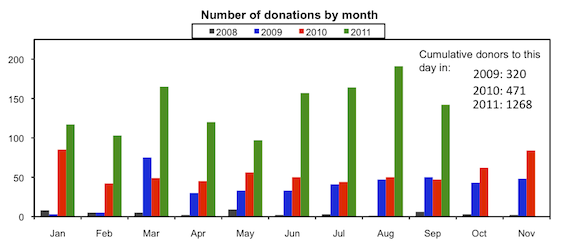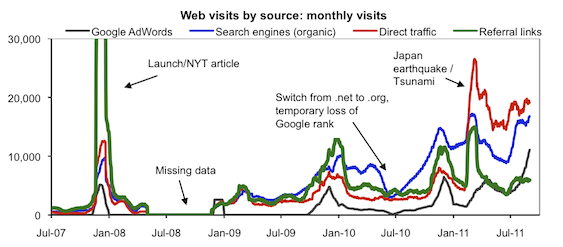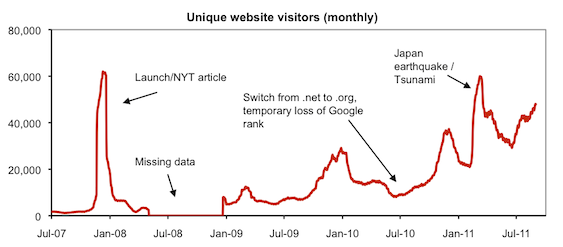[Added August 27, 2014: GiveWell Labs is now known as the Open Philanthropy Project.]
We’re starting a new initiative, GiveWell Labs, an arm of our research process that will be open to any giving opportunity, no matter what form and what sector.
This post lays out, very broadly, what qualities we are looking for in giving opportunities. Future posts will elaborate on each of these criteria, and we will also discuss how we think these criteria apply to specific areas of philanthropy. Readers will hopefully be left with a strong sense of our beliefs and biases and what we’re looking for.
The main things we’re looking for in a giving opportunity are:
- Upside: we’d prefer to fund projects that have the potential to go extremely well. Projects aiming to demonstrate a model that can be scaled up, generate new scientific knowledge that can be used by many others, or put a program in place that eventually becomes self-sustaining independent of philanthropic support all have “upside.” Simply aiming to deliver insecticide-treated nets using established delivery methods does not have much “upside” (though it may score well on many of these other criteria).
- High likelihood of success: we’d prefer to fund projects that are very likely to do a respectable amount of good per dollar. The “evidence base” of a project – i.e., the set of past well-understood events that can be used to put its likelihood of success in context – is key here. Obviously this criterion will often be in tension with the “upside” criterion; the ideal for us is a project that has both, i.e., a project that’s both very likely to do some good and has some possibility of doing enormous amounts of good (we think that giving to VillageReach in 2010 fit into this category).
- Accountability. We’re OK with funding a project that might fail, but it’s very important to us that we be able to recognize, document, publicly discuss, and learn from such a failure if it happens. We thus have a strong preference to fund projects with specific and meaningful deliverables that will give us a strong sense of whether things are going as hoped (as well as permission to publish updates on these deliverables).We are relatively new to giving and plan to be doing a lot more of it in the future, so making sure that early projects are learning opportunities is crucial.
- People we’re confident in. We prefer to fund projects where we are impressed by and confident in the people involved. However, our take on how to evaluate people seems to be different from that of some other funders; we’ll elaborate in a future post.
- Room for more funding. We prefer to fund projects that would not happen without our funding. This means that we aren’t actually looking for the “best ways to spend philanthropic funds”; we’re looking for the “best ways to spend philanthropic funds that aren’t already on the agendas of other funders.”
We don’t have an explicit formula for weighing the above criteria above against each other. Broadly speaking, we’d prefer to fund an opportunity that is strong on all of the following: (a) at least one of #1 and #2; (b) at least one of #3 and #4; (c) #5. (Note that we do not feel the approach of estimating ‘expected good accomplished’ for each project, and simply ranking by this metric, is a good way to maximize actual expected good accomplished; for more, see the body and comments of a recent post on expected-value calculations.)
One more consideration is leverage: we prefer projects where our funding mobilizes more funding from other givers as well, thus multiplying the impact of our funds in some sense. However, we think this is far less important than the criteria listed above. We’d rather fund a great project all on our own, and leave other funders to spend on their own projects, than get a 5:1 or 100:1 funding match from others on a project that is weak on the above criteria.
If you think we’re missing any important impact-related criteria, please let us know.




